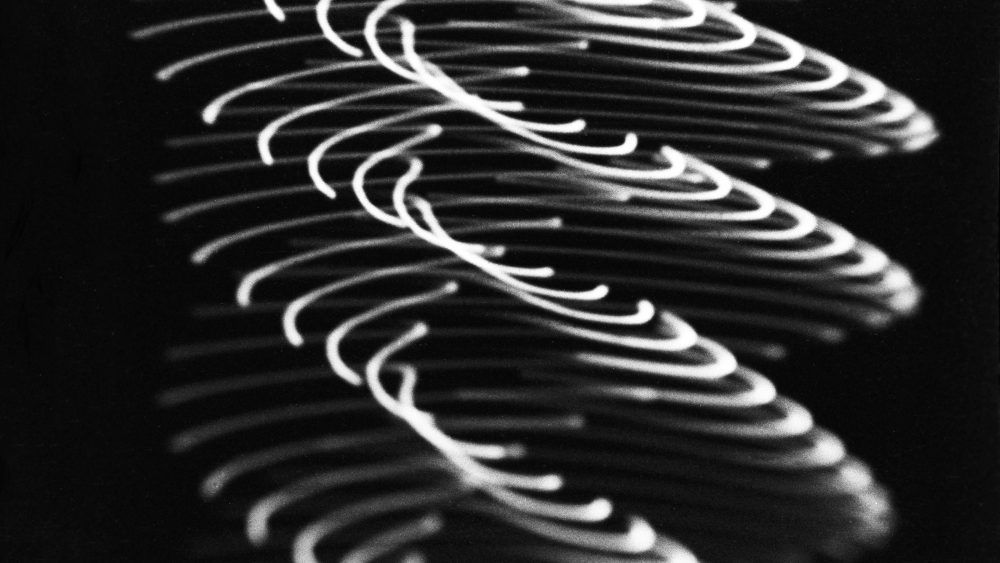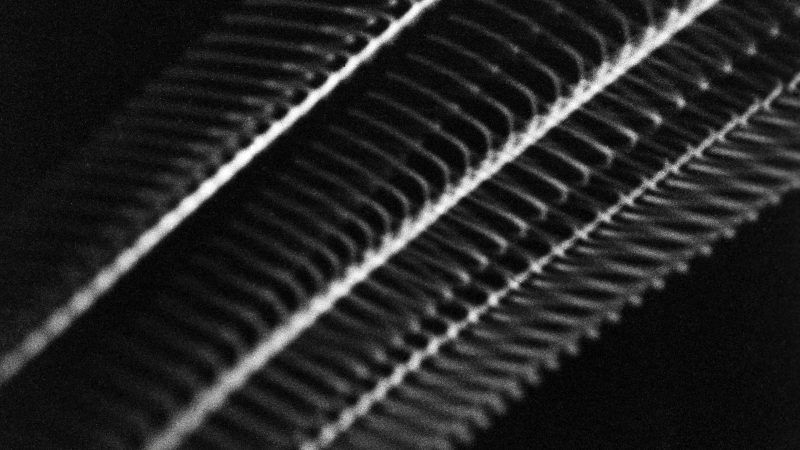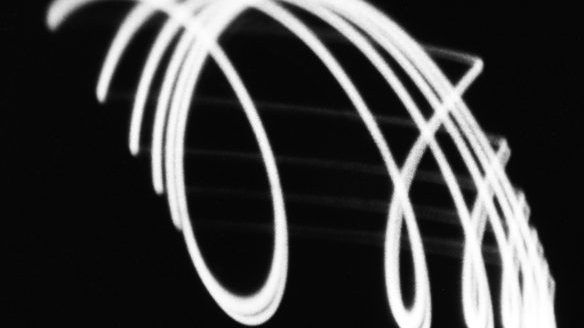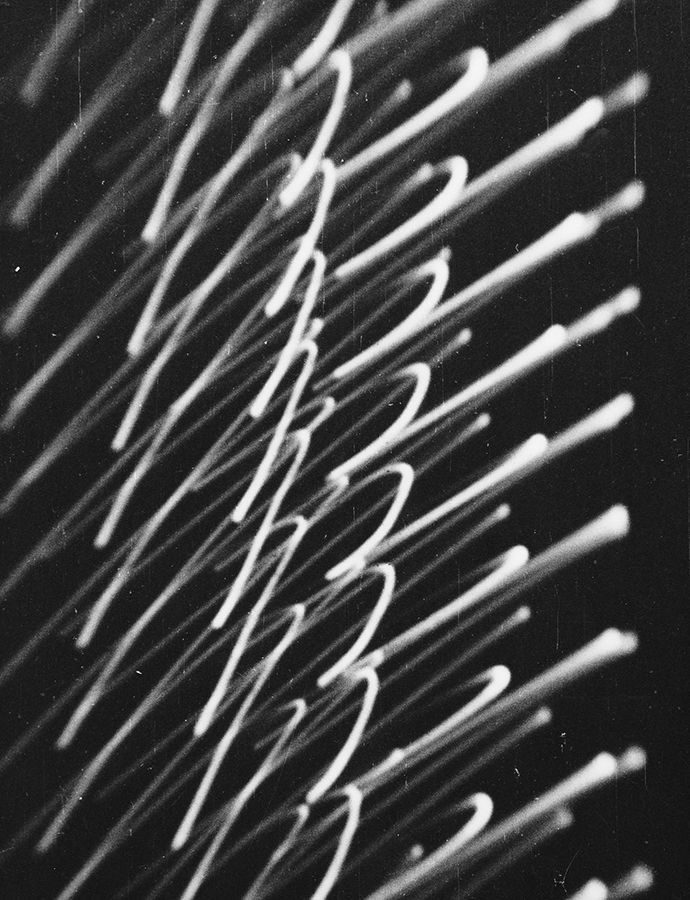From Camera to Artificial Intelligence 1954 – 2024
3. – 6. Juli 2024 – Akademie der Künste, Berlin
From the 3rd to the 6th of July 2024, the first edition of The Generative Art Summit was hosted by Akademie der Künste in Berlin. Journalist Susanne Päch coordinated the Summit in honor of Herbert W. Franke (14 May 1927 – 16 July 2022), an Austrian physician considered by Die Zeit as "the most prominent German writing Science Fiction author." Franke was also one of the pioneers in generative computer art, creating digital art since the late 1950s, sometimes under the moniker Sergius Both, as an Avatar name in Active Worlds and Opensimulator grids.
Päch has a PhD in the history of science and communication and is the owner and managing director of the consulting company mediacomeurope GmbH. But more importantly for the current case, she is the head of The Art Meets Science – Herbert W. Franke Foundation, which is devoted to supporting the development and public access to the works of internet art pioneers, bringing together the realms of art and science through a contemporary technological lens.
Päch was also Franke’s wife until he died in 2022, and together with curator Anika Meier, she initiated The Generative Art Summit. From the beginnings of computer-generated art to its current incorporation into tokenized financial infrastructures such as blockchain, the three-day event brought together a substantial group of transgenerational guests who unveiled their fields of expertise, both individually and in conversation with others.

I only attended the conference for a day, on the 3rd of July, but that already provided a valuable glimpse of how the festival intended to acknowledge the work of the early adopter and the paths their experiments opened up for the newer generations. The panels were rather short and tracked with a merciless stopwatch. There was little room for further development, so the panels offered insightful introductions to relevant practitioners whose works required further research.
An important feature that differentiates the times we live in now from when some of those artists started decades ago is the increasing presence and relevance of platforms, or in other words, networks around which infrastructure has been built. The honor guests presented their research and interests, but for this article, I chose only the speakers who resonated more with me, starting with the ones focused on platforms and networks. The full list of speakers and order of appearances can be found here.
One of the first speakers to do so was Le Random, a digital and generative art library that acknowledges the importance of historical contexts, specifically to classify the current and upcoming creations in the digital sphere. Aiming to illustrate to the public while they learn about it themselves, Le Random is building an editorial platform and an ongoing timeline. They believe that bringing together on-chain art with wider historical contexts may help discover the aesthetic potential of computers, but also promote the artists as well as the contexts they belong to.
Ciphrd’s platform fx(hash) acts as a secure environment and toolbox for creators, including marketplace features, curation tools, live minting implementations, and a space allowing artists and collectors to pursue their passion for generative art. They want to encourage their users to create generative art projects, buy, sell, and collect art — and share their collections with the world, thus building a generative art hub. The ultimate goal is to help creators make a living out of their art, independently of their geolocation.

Berlin-based »0x Salon« collective is an ongoing, non-profit experiment that “interrogates digital culture through discourse events and residencies, producing scholarly and creative interventions in the process” – as they describe themselves. Wassim Z. Alsindi is a “veteran of the time chain,” specializing in conceptual design and philosophy of peer-to-peer systems rather than obsessing with what’s new or upcoming, he prefers to focus on communities and how they can operate together in order to build knowledge around potential of technology. Alsindi has an editorial column at the MIT Computational Law Report and co-founded MIT’s “Cryptoeconomic Systems” journal and conference series. Wassim holds a Ph.D. in ultrafast supramolecular photophysics from the University of Nottingham and many more.
Last but not least, generative artist Jeff Davies is a mathematics lover and the strategic advisor of Art Blocks who believes in the potential of graphic art and mathematical methodologies. Davies was a long-time collaborator of Bright Moments, an online gallery founded by American entrepreneur and angel investor Seth Goldstein. Bright Moments is a digital art gallery that started in Venice Beach and has gone on to create art communities worldwide by creating unique, in-person experiences and crypto-citizens. Their publication was available on Akademie der Künste’s lobby tables.
Some artists were discussing general topics on the panels rather than their own practices, yet a number of them triggered my – very subjective – curiosity more than others. Thus, and to keep it concise, I will mention just a few of the participant artists. Dr. Ivona Tau, a generative A.I. artist from Vilnius, Lithuania, finds and evokes emotions through artificially intelligent tools. She also works with neural networks and code as a medium in experimental photography and motion painting. Engineer and self-taught artist from The Netherlands Anna Lucia – now based in Cairo – combines mathematics and computer science concepts with textile work and other crafts. On her end, Chinese-Canadian artist and researcher Sougwen Chung 愫君 tries to understand the dynamics of humans and systems through her collaborations with machines.
Another batch of artists presented their own projects, like the experiential artist duo"Operator," – comprised of Ania Catherine and Dejha Ti – or a whole artistic trajectory, such as Jonas Lund. "Operator," performed a presentation of their ongoing project “Human Unreadable: Embodied Generative Art,” an extrapolation of movement into data and vice-versa, exploring the notion of bodily and movement quantification, and its aesthetic entails. Names such as Analivia Cordeiro were mentioned, and her exhibition “From Body to Code” is an example of a pioneer in movement notation, movement tracking, and data translation.
Jonas Lund's expertise in writing contracts became evident through the many slides he presented. More importantly, he described how these contracts question certain rules that are granted in contemporary art transactions. He uses technology both as a platform to showcase his work and as a means to question the technology and the contradictions inherent in bureaucracy. He also organized his projects through a DAO (Decentralized Autonomous Organization) and used blockchain art at an early and yet unexploited stage.

Mario Klingemann mentioned his project Botto, a DAO devoted to collectively creating artwork through the community’s feedback. It is a decentralized artist who completes artworks through the community’s participation, defining a new art genre.
One of the day's first speakers was independent curator and software developer Dr. Joerg Stelkens, who used his technical knowledge to create the crusher-X granular synthesizer effect plug-in and a lot of generative art.
One of the last presentations, but perhaps my favorite, was Sasha Stiles’ reading of an AI-generated poem based on Franke’s novel The Orchid Cage, which brought Susanne Päch to tears. Stiles’ background is in literature, not tech, yet she knows how to train the models to get particular outcomes that sound robotic but make more sense than any outcome given by ChatGPT or any LLM. Historian Catherine Mason was in conversation with Stiles after presenting a thorough summary of the Computer Arts Society titled “A Quest for Creative Collaboration: George Mallen and the Early Computer Arts Society.”
There is much more to say about what happened there and other guests and speakers, but I will leave it here, hoping to provide a concise collection of references. I found the panels to be like a tasting experience, offering a brief glimpse into topics that the audience would need to research further on their own. This format appealed to my curiosity to learn more. I hope that you will enjoy checking these people and projects as much as I did.
Best,
Gabriela | Ape Unit
